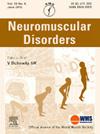144P 在巴西登革热爆发之际对脊髓性肌肉萎缩症的基因治疗:病例报告
IF 2.7
4区 医学
Q2 CLINICAL NEUROLOGY
引用次数: 0
摘要
登革热是一种蚊媒病毒性疾病,流行于全球热带和亚热带地区,主要由埃及伊蚊传播。登革热的表现范围很广,从轻微的流感样症状到严重的危及生命的症状都有。在典型的实验室表现中,我们观察到血小板减少和肝酶的改变,它们大多没有症状,但有可能演变成更严重的病症。鉴于在使用onasemnogene abeparvovec(OA)治疗后也可观察到这些相同的实验室变化,患者在输液后发生登革热可能会导致潜在的并发症。描述一例接受 OA 治疗的 SMA 患者在皮质类固醇停药阶段出现登革热的病例。这是一名 I 型脊髓性肌萎缩症(SMA)患者,在 6 个月大时因感染性发作引起的严重呼吸道并发症而被确诊(有 2 个 SMN2 基因拷贝)。确诊后,患者开始接受利迪普兰治疗,此后反应良好,直到 9 个月大时才开始接受基因治疗。患者服用泼尼松龙,剂量为 1 毫克/千克,持续了一个月。仅观察到轻度血小板减少(120,000/mm³)和转氨酶升高低于正常上限的 2 倍。治疗开始一个月后,根据方案,开始逐步减少皮质类固醇治疗,到输注后第八周,患者的泼尼松龙剂量为 0.25 毫克/千克。此时,患者开始出现发热、嗜睡、皮肤出现红斑、血小板减少至 80 000/mm³、转氨酶水平升高至正常值上限的三倍等症状。考虑到当时巴西正爆发登革热疫情,医生对患者进行了血清学检查,结果呈阳性。由于文献中没有类似病例的描述,我们决定暂停使用泼尼松龙,并每 2 到 3 天采集一次样本。症状出现 8 天后,实验室检查结果有所改善,所有化验项目均恢复正常。此时,我们决定停止皮质类固醇治疗。这是医学文献中记载的首例在输注基因治疗 SMA 后出现登革热的病例。尽管患者在没有特殊干预的情况下获得了良好的治疗效果,但这一病例强调了虫媒病毒感染导致实验室变化的可能性,而这些变化可能会加剧在接受 OA 治疗的患者中常见的那些变化。同样重要的是要强调,在输液后的早期阶段,血小板减少和肝脏变化可能更明显,此时感染可能会导致潜在的严重并发症。因此,对于来自登革热流行地区的这部分患者,在进行基因治疗后的标准护理的同时,还应加强登革热防护措施和/或免疫接种。本文章由计算机程序翻译,如有差异,请以英文原文为准。
144P Gene therapy for Spinal Muscular Atrophy amid the dengue outbreak in Brazil: a case report
Dengue fever is a mosquito-borne viral disease prevalent in tropical and subtropical regions globally, primarily spread by the Aedes aegypti mosquito. It manifests in a spectrum from mild flu-like symptoms to severe, life-threatening presentations. Among the classic laboratory manifestations, we observe thrombocytopenia and alterations in liver enzymes, which are mostly asymptomatic but can potentially evolve into more severe conditions. Given that these same laboratory changes can also be observed following therapy with onasemnogene abeparvovec (OA), the occurrence of dengue in patients after infusion may lead to potential complications. To describe the case of a patient with SMA treated with OA who developed dengue during the corticosteroid withdrawal phase. This is a patient with Type I spinal muscular atrophy (SMA), diagnosed at 6 months of age (with 2 copies of the SMN2 gene) due to severe respiratory complications from an infectious episode. After diagnosis, the patient began treatment with Risdiplam, presenting good response thereafter until the age of 9 months when gene therapy was infused. The patient was taking prednisolone at a dose of 1 mg/kg for one month. Only mild thrombocytopenia (120,000/mm³) and an elevation in transaminases less than 2 times the upper limit of normal were observed. One month after treatment initiation, as per protocol, a gradual reduction of corticosteroid therapy was started, and by the eighth week post-infusion, the patient was on a 0.25 mg/kg dose of prednisolone. At this point, the patient began to exhibit symptoms of fever, lethargy, red spots on skin, a thrombocytopenia of 80,000/mm³ and transaminase levels elevated to three times the upper limit of normality. Considering the concurrent dengue outbreak in Brazil at the time, serology was ordered and returned positive. Since there were no similar cases described in the literature, we decided to withhold prednisolone tapering, and to recollect samples every 2 to 3 days. Eight days after the onset of symptoms, there was an improvement in laboratory findings with normalization of all tests. At this point, we then decided to discontinue the corticosteroid therapy. This is the first documented case in the medical literature of dengue following gene therapy infusion for SMA. Despite the patient's favorable outcome without specific interventions, this case highlights the potential for an arboviral infection to cause laboratory changes that could exacerbate those commonly observed in patients treated with OA. It is also important to highlight that Infections in earlier phases post-infusion, where thrombocytopenia and hepatic changes may be more pronounced, could lead to potentially serious complications. In this context, dengue protection measures and/or immunization should be reinforced in this population of patients from endemic areas, along with the standard care following gene therapy.
求助全文
通过发布文献求助,成功后即可免费获取论文全文。
去求助
来源期刊

Neuromuscular Disorders
医学-临床神经学
CiteScore
4.60
自引率
3.60%
发文量
543
审稿时长
53 days
期刊介绍:
This international, multidisciplinary journal covers all aspects of neuromuscular disorders in childhood and adult life (including the muscular dystrophies, spinal muscular atrophies, hereditary neuropathies, congenital myopathies, myasthenias, myotonic syndromes, metabolic myopathies and inflammatory myopathies).
The Editors welcome original articles from all areas of the field:
• Clinical aspects, such as new clinical entities, case studies of interest, treatment, management and rehabilitation (including biomechanics, orthotic design and surgery).
• Basic scientific studies of relevance to the clinical syndromes, including advances in the fields of molecular biology and genetics.
• Studies of animal models relevant to the human diseases.
The journal is aimed at a wide range of clinicians, pathologists, associated paramedical professionals and clinical and basic scientists with an interest in the study of neuromuscular disorders.
 求助内容:
求助内容: 应助结果提醒方式:
应助结果提醒方式:


